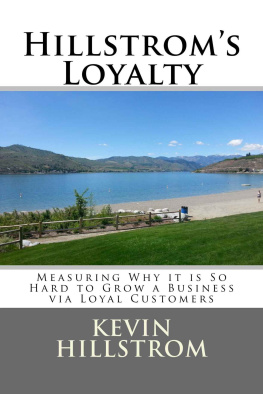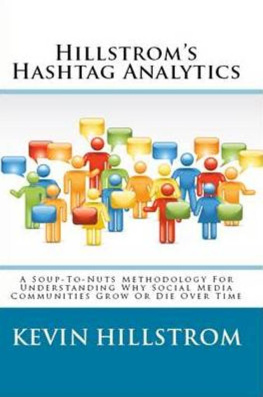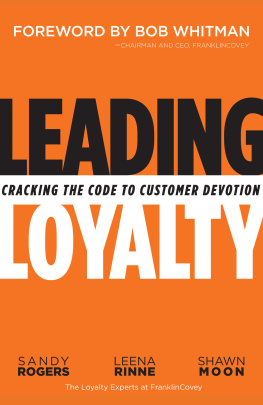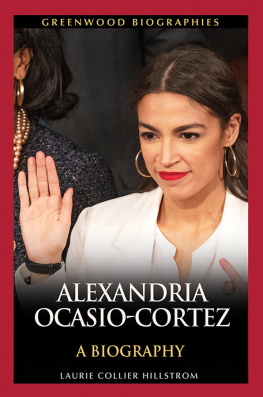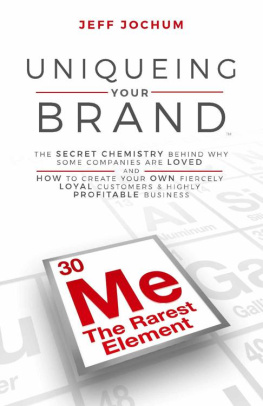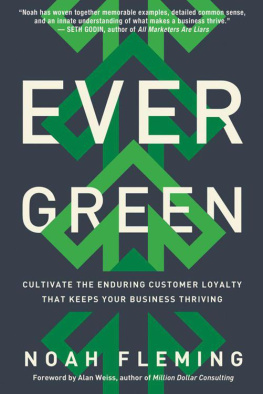Kevin Hillstrom - Hillstrom’s Loyalty: Measuring Why It Is So Hard To Grow a Business via Loyal Customers
Here you can read online Kevin Hillstrom - Hillstrom’s Loyalty: Measuring Why It Is So Hard To Grow a Business via Loyal Customers full text of the book (entire story) in english for free. Download pdf and epub, get meaning, cover and reviews about this ebook. year: 2015, genre: Business. Description of the work, (preface) as well as reviews are available. Best literature library LitArk.com created for fans of good reading and offers a wide selection of genres:
Romance novel
Science fiction
Adventure
Detective
Science
History
Home and family
Prose
Art
Politics
Computer
Non-fiction
Religion
Business
Children
Humor
Choose a favorite category and find really read worthwhile books. Enjoy immersion in the world of imagination, feel the emotions of the characters or learn something new for yourself, make an fascinating discovery.
- Book:Hillstrom’s Loyalty: Measuring Why It Is So Hard To Grow a Business via Loyal Customers
- Author:
- Genre:
- Year:2015
- Rating:3 / 5
- Favourites:Add to favourites
- Your mark:
- 60
- 1
- 2
- 3
- 4
- 5
Hillstrom’s Loyalty: Measuring Why It Is So Hard To Grow a Business via Loyal Customers: summary, description and annotation
We offer to read an annotation, description, summary or preface (depends on what the author of the book "Hillstrom’s Loyalty: Measuring Why It Is So Hard To Grow a Business via Loyal Customers" wrote himself). If you haven't found the necessary information about the book — write in the comments, we will try to find it.
Hillstrom’s Loyalty: Measuring Why It Is So Hard To Grow a Business via Loyal Customers — read online for free the complete book (whole text) full work
Below is the text of the book, divided by pages. System saving the place of the last page read, allows you to conveniently read the book "Hillstrom’s Loyalty: Measuring Why It Is So Hard To Grow a Business via Loyal Customers" online for free, without having to search again every time where you left off. Put a bookmark, and you can go to the page where you finished reading at any time.
Font size:
Interval:
Bookmark:
Hillstroms Loyalty
Measuring Why It Is So Hard
To Grow a Business via Loyal Customers
Kevin Hillstrom
Acknowledgements
Thanks to all of the readers of my blog who questioned the logic of loyal buyer behavior and first-time buyer behavior. Their specific questions led to the creation of this booklet.
Copyright 2015 by Kevin Hillstrom
All rights reserved. No part of this publication may be reproduced or transmitted in any form or by any means, electronic or mechanical, including photocopy, recording, email, Internet, or any information storage and retrieval system now known or to be invented, without permission in writing from the author.
13 Digit ISBN: 978-1519244758+
Published in the United States of America by Kevin Hillstrom
Available from Amazon.com and other retailers.
Manufactured in the United States of America
First Edition
Cover Design: Kevin Hillstrom and Createspace.com
Cover Art: Kevin Hillstrom
Table of Contents
Surprise and Delight!
It is 2001. Thats a long time ago! I am sitting in a conference room at Nordstrom, participating in a meeting with the loyalty team.
The room is full of ideas, bubbling with ideas, thoughts percolating at a rapid pace. A grease board smolders with residue from various markers.
Meeting attendees share ideas for how to increase customer loyalty at Nordstrom. A phrase is repeatedly used surprise and delight . In my career, which at the time spanned thirteen years, I had not heard the term. The team wanted to identify ways to surprise and delight loyal customers. Random chocolates handed out to great customers. Free shipping. Concierge service. Advanced notice of trunk shows. The team wanted to spend money, but didnt have a lot of money. Would you be willing to fund free shipping ? was a question fielded (the answer was no).
Not long after that meeting, the loyalty team disbanded.
While the team was disbanded, the concept of surprise and delight would stick with me for the next fourteen years! Why did the team members repeatedly bring up this topic? Did they know something that I didnt know? Was that the secret to keeping customers loyal?
Many of the employees participating on the loyalty team had worked previously at Starbucks. Their comments, thoughts/opinions, and tactics were offered at a rapid pace. Meanwhile, Nordstrom-centric employees in the meeting were largely quiet. This made little sense to me, because Nordstrom had the most loyal customers of any company I previously worked at. But it was the employees with Starbucks background that had the most to say.
A few years earlier, I worked at Eddie Bauer. We had a loyalty program. I measured the effectiveness of the program. Let me tell you, the program didnt exactly push the peanut. I could not demonstrate that the program paid for itself. In other words, the discounts and promotions and points associated with the program cost money, and customers who took advantage of the free money did not spend enough incremental money to cover the cost of the program.
To summarize I had three data points an ineffective program at Eddie Bauer an unknown entity at Nordstrom and Nordstrom employees who previously worked at Starbucks and cared about loyalty with an almost religious fervor.
Who was right? Do loyalty programs pay off?
Good question!
A Meeting
A few weeks ago, I sat in a meeting. This company, like most of my client base, possessed a customer base with infrequent purchase activity. The average twelve-month buyer had about a one-in-three chance of purchasing again in the next twelve months. If the customer purchased, the customer would only purchase one or two times in the next year.
Executive leadership wanted to grow the business by getting customers to become more loyal . I pointed out that customers had comparable repurchase rates for the past five years, strongly suggesting that customers were never going to become more loyal. Executive leadership reminded me otherwise they strongly believed that there was a secret formula that they had yet to crack, and once that formula was cracked, customers would immediately become loyal, and profit would fall out of the sky.
It was after that meeting, as I sat on an airplane, that I realized what the disconnect was. I recalled the meeting at Nordstrom, where Starbucks-centric employees loudly advocated loyalty initiatives. I thought about the meeting a few hours earlier, where the company possessed few loyal customers. What was the difference between the two companies?
Think about Starbucks for a moment. An existing customer has a 90% chance of purchasing again on a monthly basis, and if the customer purchases, the customer is likely to purchase several times per week. Meanwhile, the company I visited possessed a customer base where the customer had a one in three chance of buying again in the next year (not the next month), and if the customer purchased again, the customer purchased one or two times in the next year (not the next month). This disconnect doesnt happen because Starbucks is fundamentally better at fostering loyalty. Instead, the disconnect happens because of frequency of want. The Starbucks customer wants to buy the product several times per week.
Now, lets be honest. Loyalty is a squishy concept. You might only buy a new car once every five years, but if you always buy a Toyota, you are loyal to Toyota. Meanwhile, you may not think much of McDonalds, but they are conveniently located and they serve food quickly and you are in a hurry, so you buy from them frequently. Or you like diet cola so you purchase a Diet Coke if one is available, or you purchase a Diet Pepsi if one is available. To Coke and Pepsi, you are a loyal shopper, even though you are not loyal to either brand.
The purpose of this booklet, then, is to avoid arguing about loyalty let the folks on Twitter argue without facts. My goal is to share facts. Based on the facts, you can decide for yourself whether you think your customer base will ever be loyal, whether a subset of your customer base is loyal, and whether you can implement a program that increases customer loyalty.
Facts
Loyalty initiatives have the potential to work when customers shop frequently. A frequent flier program has the potential to work because customers fly often enough to enjoy the rewards of the program. A frequent flier program is useless to a customer who flies four times per year. In fact, the loyalty program may have the opposite effect in situations where moderate fliers are faced with the challenges of a loyalty program. What is the point of a loyalty program if you are forced to sit in seat 64E, if you are forced to board in Seating Group 29, or if your luggage is tagged for free and delivered to Baggage Carousel 11? Why sit and watch the dozen members of the Elite Rewards program sit in first class sipping on wine? If you fly once a year, sure, youll put up with it. But if you are in the middle of the pack, and not able to achieve Elite status, well, the whole system stinks, and youll shop elsewhere based on price, convenience, and schedule.
You have to have a large number of loyal customers to offset any of the negative issues associated with a loyalty program. The large number of loyal customers have to deliver a ton of profit from loyalty initiatives to offset any associated negatives.
Think about it this way. Your customer base has to shop often in order to obtain benefits that pay for themselves and meaningfully grow the business. Look at the two customers below:
Customer #1 = 35% chance of buying again, 2 purchases per repurchaser.
Customer #2 = 80% chance of buying again, 10 purchases per repurchaser.
Customer #1 can be expected to place 0.35*2 = 0.70 purchases next year.
Customer #2 can be expected to place 0.80*10 = 8.00 purchases next year.
Next pageFont size:
Interval:
Bookmark:
Similar books «Hillstrom’s Loyalty: Measuring Why It Is So Hard To Grow a Business via Loyal Customers»
Look at similar books to Hillstrom’s Loyalty: Measuring Why It Is So Hard To Grow a Business via Loyal Customers. We have selected literature similar in name and meaning in the hope of providing readers with more options to find new, interesting, not yet read works.
Discussion, reviews of the book Hillstrom’s Loyalty: Measuring Why It Is So Hard To Grow a Business via Loyal Customers and just readers' own opinions. Leave your comments, write what you think about the work, its meaning or the main characters. Specify what exactly you liked and what you didn't like, and why you think so.

